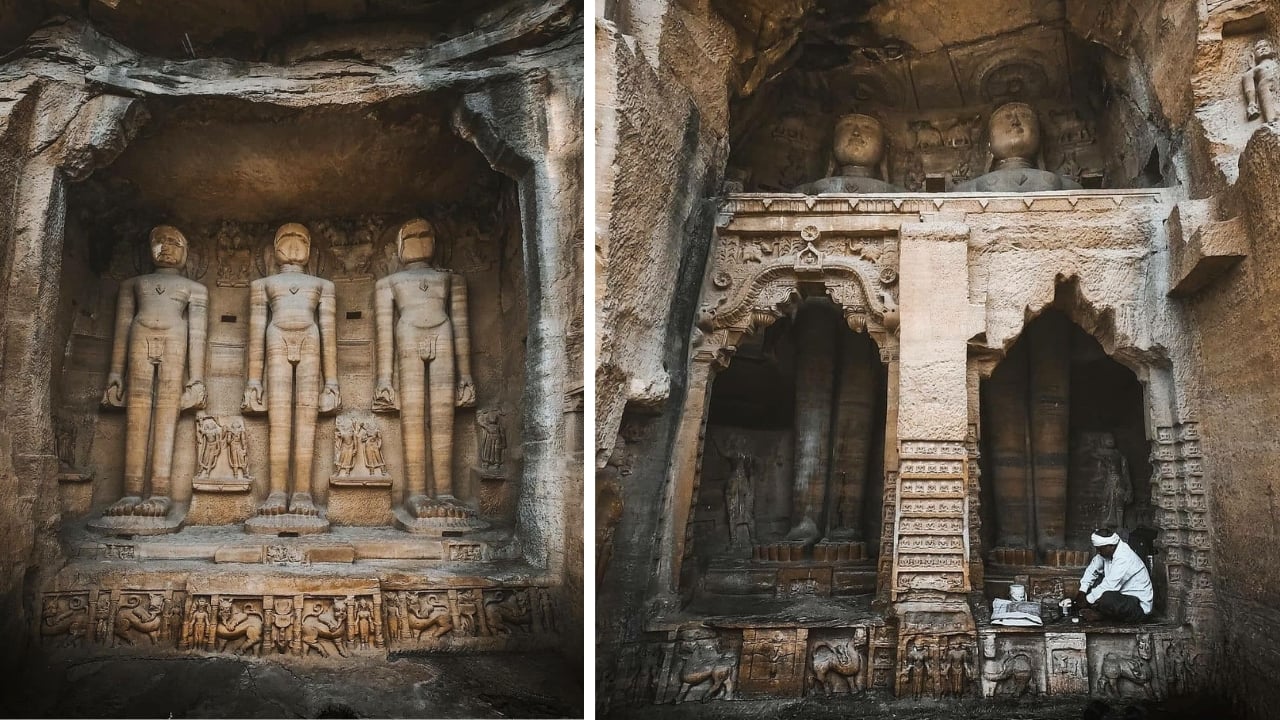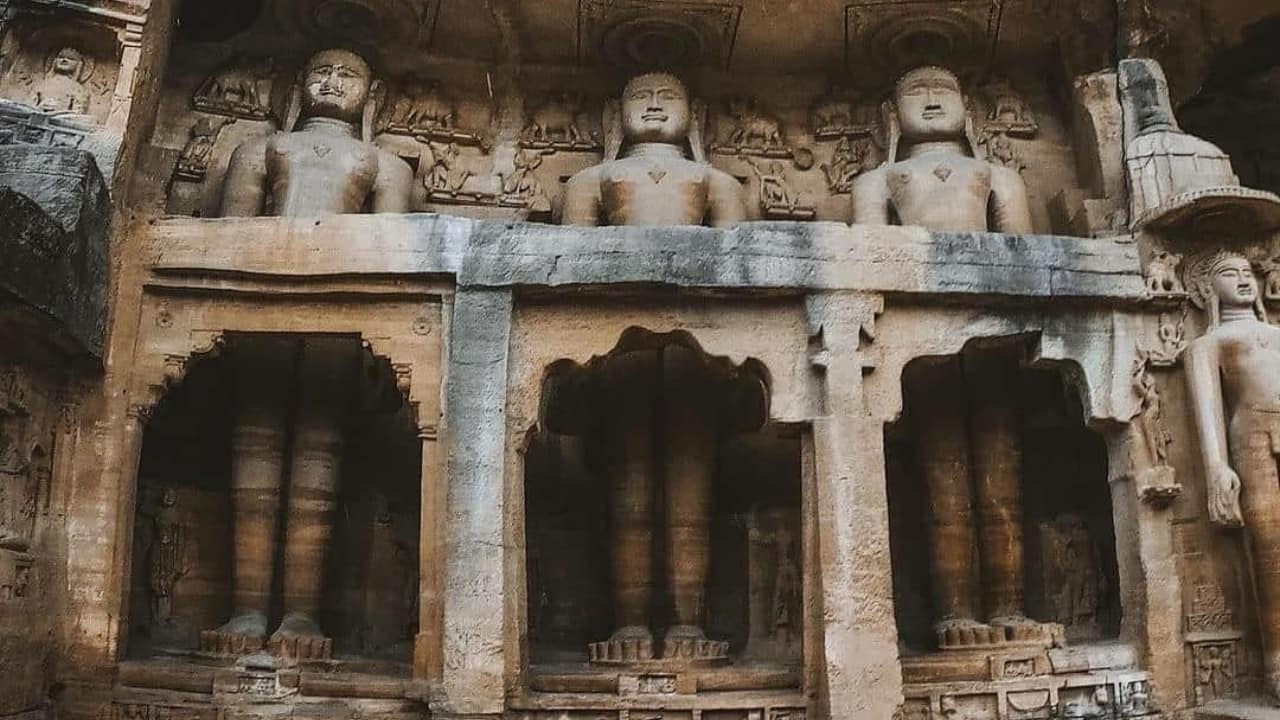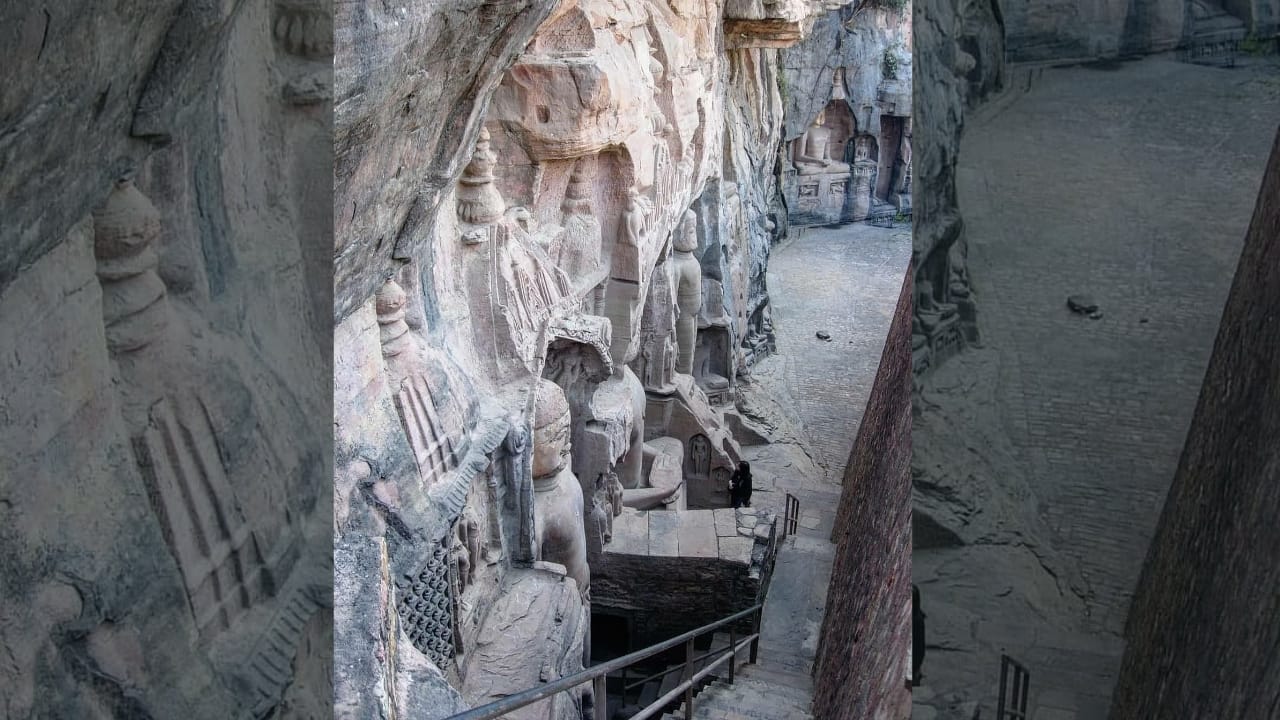



High above the city of Gwalior, the grand fort rises like a guardian of time. But hidden within its massive walls lies a treasure that often leaves travelers spellbound—the Siddhachal Caves. These rock-cut wonders, with their towering statues of Jain Tirthankaras, aren’t just monuments; they are timeless storytellers of faith, resilience, and artistry.
Carved in Stone, Carved in History
Walk into the Urvashi valley inside Gwalior Fort and the sight is unforgettable—colossal figures, some reaching 57 feet high, carved straight out of the hillside. Each sculpture, whether in the meditative Padmasana or the upright Kayotsarga posture, radiates a calmness that’s hard to miss.
 Hidden within Gwalior Fort, the Siddhachal Caves showcase timeless Jain sculptures radiating peace and devotion. (Image: Facebook. Secret Temples)
Hidden within Gwalior Fort, the Siddhachal Caves showcase timeless Jain sculptures radiating peace and devotion. (Image: Facebook. Secret Temples)
The earliest caves date back to the 7th century, but much of what we see today was shaped in the 15th century, during a flourishing period for Jain art. Sadly, not all of it survived untouched. In the 16th century, Mughal emperor Babur ordered many of the statues to be defaced. Yet, the spirit of the place endured—later generations restored and preserved them, ensuring the caves remained a living testament to faith against all odds.
Artistry That Defies Time
The caves are pure masterpieces of rock-cut architecture. Every fold of the robes, every serene expression, every carved symbol tells a story of craftsmanship that valued both devotion and detail. Some caves open into tranquil meditation chambers, while others have small pillared halls, suggesting that they were once lively centers of spiritual discourse.
 Experience the serenity of Siddhachal Jain Caves in Gwalior, where colossal statues whisper tales of faith. (Image: Facebook/ Secret Temples)
Experience the serenity of Siddhachal Jain Caves in Gwalior, where colossal statues whisper tales of faith. (Image: Facebook/ Secret Temples)
Standing here, surrounded by these silent giants of stone, you can almost imagine monks gathering centuries ago, exchanging philosophical ideas while the fort echoed with chants of peace.
What’s Around the Caves
If the Siddhachal Caves stir your curiosity, the region has plenty more gems to uncover:
1. Bhojpur Temple – Known for one of the largest unfinished Shivlingas in India, this 11th-century marvel sits by the Betwa River and carries the mark of King Bhoja’s ambitious vision.
2. Bhimbetka Rock Shelters – A UNESCO World Heritage Site where cave paintings, some over 30,000 years old, bring alive the daily lives of early humans. It’s like flipping through the world’s oldest illustrated diary.
3. Raisen Fort – Rising above the plains, this medieval fort offers sweeping views, massive gateways, and a haunting sense of forgotten grandeur.
 The Siddhachal Caves of Gwalior Fort stand as silent witnesses to Jain devotion and timeless craftsmanship. (Image: Facebook/ Secret Temples)
The Siddhachal Caves of Gwalior Fort stand as silent witnesses to Jain devotion and timeless craftsmanship. (Image: Facebook/ Secret Temples)
Why You Should Go
Visiting the Siddhachal Caves is more than ticking a monument off your list—it’s about feeling history breathe around you. It’s about standing in front of sculptures that survived empires, invasions, and centuries, and still radiate the same spiritual calm they did when the first chisel struck stone.
For history buffs, spiritual seekers, or simply anyone who loves places that carry whispers of the past, the Siddhachal Caves at Gwalior Fort are not just worth visiting—they are unforgettable.
Discover the latest Business News, Sensex, and Nifty updates. Obtain Personal Finance insights, tax queries, and expert opinions on Moneycontrol or download the Moneycontrol App to stay updated!
Find the best of Al News in one place, specially curated for you every weekend.
Stay on top of the latest tech trends and biggest startup news.